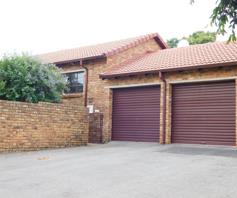Statistics reveal that nine out of 10 buyers will start their search for a property on the internet before going anywhere else. Essentially what this means is that the first impression most buyers will have of a property will be based purely on the home’s online listing photos.

This shows just how important it is to ensure that the photos being used to market the home are the ones that showcase the home’s best features and have the buyer wanting to see more, says Adrian Goslett, CEO of RE/MAX of Southern Africa.
He says that it is possible that a home could be overlooked if the online images are of poor quality or don’t highlight the property’s selling points. “It is extremely important that the photos are high quality photos that draw in a potential buyer’s attention and give them a good idea of what the property has to offer.” He says buyers are not likely to take the time to go and see the property if they don’t like what they see online. For this reason sellers need to ensure that they are 100 percent satisfied with the images that are used to market their home.
While every seller won’t have professional photographic experience, the majority of people will be able to distinguish between a good and bad photo. Sellers need to have a look at the photos and decide whether or not they are portraying the home’s best qualities and communicating the right message. “It may not be easy, but if possible, the seller needs to view the images as objectively as possible, placing themselves in the prospective buyer’s viewpoint,” says Goslett. He says to ask yourself whether, if you saw this photo, you'd want to see more, or would you want to live in that house? Is the image enticing or would you scan over it and move onto the next home?
According to Goslett, sellers should prepare their home before any photographs are taken. He provides a few considerations for sellers to keep in mind to assist them in getting their home ready for the camera:
Ensure it’s clean and tidy

Essentially, the seller should prepare the home as if it was going on show, says Goslett. Pack away items that are not in use, make the beds and ensure that there are no dirty dishes in the sink. These things will only act as a distraction and will draw the attention away from the home’s features. If the photos are taken at a high resolution, which is advisable, the photos could reflect evidence of dirt, so areas being photographed should be cleaned beforehand. Particular attention should be given to reflective surfaces, as these can easily show marks and streaks.
De-clutter and remove bulky furniture
The adage of less is more rings true here - bulky, oversized furniture could make a room appear smaller than it is. If possible, he says, remove large pieces of furniture in order to open up the area and allow the potential buyer to focus on the home’s features. A simplistic, minimal look is ideal.
Take some test photos
Gone are the days when taking a few test shots meant wasting expensive film. In the age of digital cameras, sellers can take as many photographs as they need to in order to get the right ones. A good idea would be to take a photo, review it, and then make adjustments if need be.
Pay attention to the outside and inside
When preparing the home for a photo shoot, it is important to pay some attention to the outside of the property and not just focus all the effort on the inside. Ideally the lawn should be mowed and the garden should be clear of any refuse. Pack away any garden tools and toys that may be outside. It is also advisable to avoid having any vehicles in the pictures where possible, says Goslett.
Consider the weather and the time of day
The ideal time to take a photo of the property would be either early in the morning or late in the afternoon on a clear sunny day. These times of day will ensure that the home is sufficiently lit, without having the harsh glare of the midday hours. If the light is too bright the photos could appear flat or colourless. If the photos are taken on an overcast rainy day, there is the chance that the home could appear very dark and uninviting. Regardless of whether photos are being taken of the inside or the outside of the home, he says to ensure that the lights are turned on as this will provide extra lighting and enhance the details seen in the photos.
Use a professional
Although photos taken by the seller can suffice, it is best to get the expertise of a professional photographer or a real estate agent with good quality camera equipment.
“Due to the fact that photos play such a pivotal role in the successful marketing of a property, it is worthwhile to ensure that the images are of a high quality and standard.” Goslett says through the eyes of potential buyers, the photos can have a direct influence on how the property is perceived and determines whether they would be willing to take the next step of viewing the property in person or not. Taking the time and effort to get the images right will pay off and will help the seller achieve their goal of attracting buyers.








